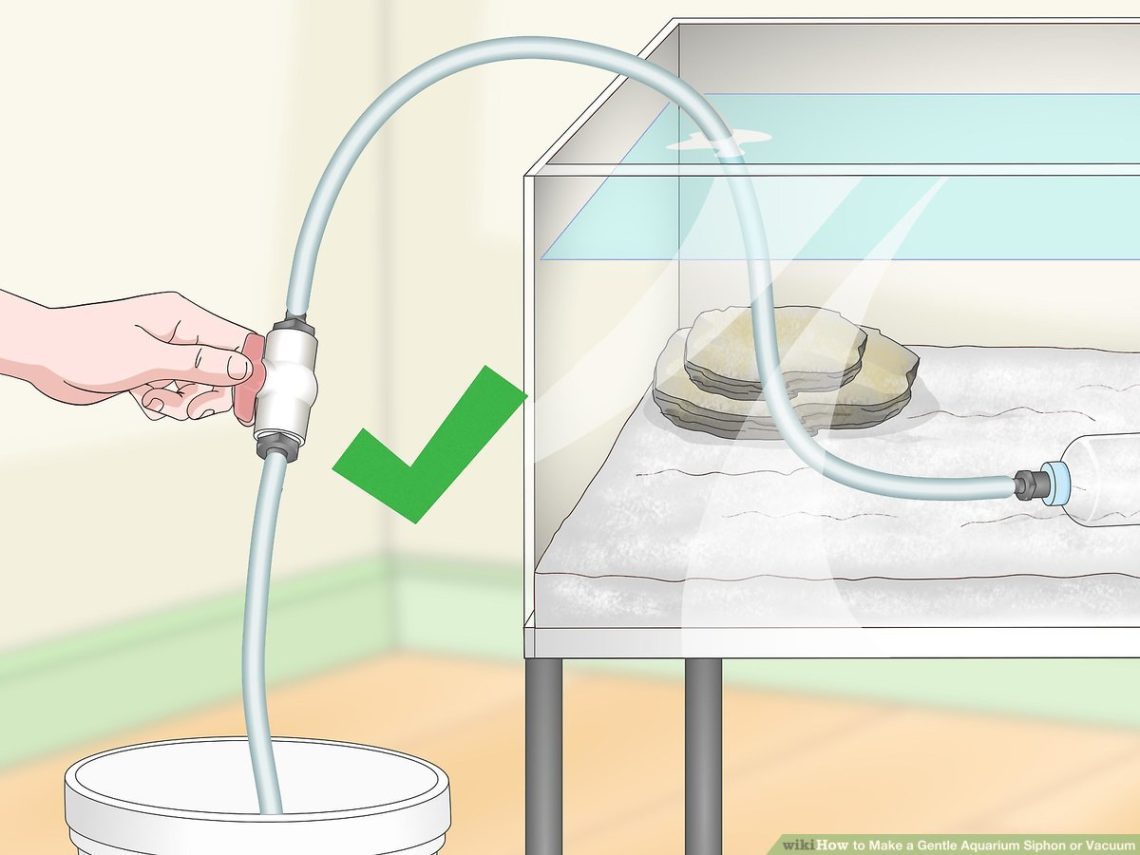
Do-it-yourself siphon for an aquarium, its types and method of manufacture
The most polluted place in aquariums is the ground. The excrement of the inhabitants of the aquarium and the remnants of food not eaten by the fish settle to the bottom and accumulate there. Naturally, your aquarium must be regularly cleaned of these fish waste. A special device – a siphon – will help you to qualitatively and effectively clean the aquarium soil.
A siphon is a device for cleaning aquarium soil. It sucks out dirt, silt and fish excrement.
Varieties of aquarium siphons
Aquarium siphons are of 2 types:
- electric, they run on batteries;
- mechanical.
Models may differ slightly from each other. The filter consists of a glass and a hose, so they are the same not only in composition, but also in the method of use. The filter must be lowered into the aquarium and placed vertically on the bottom. Silt, dirt, leftover food and excrement will eventually flow into the glass by gravity, after which they flow down the hose and into the water tank. When you see that the water coming from the aquarium into the glass has become light and clean, move the siphon with your own hands to another contaminated area.
Standard mechanical siphon consists of a hose and a transparent plastic cylinder (glass) or a funnel with a diameter of at least five centimeters. If the diameter of the glass is small and the aquarium is low, then not only dirt will get into the siphon, but also stones that will fall into the hose. A prerequisite is that the siphon must be transparent so that you can move the device to another place in time when you notice that clean water is already entering the glass. You can buy an industrial siphon at any store for aquarium lovers. There are a lot of companies that produce quality filters.
Features of siphons
There are industrial siphonswithout hoses. In such siphons, the cylinder (funnel) is replaced by dirt collectors, similar to a pocket or a trap. On sale there are also models equipped with an electric motor. The electric siphon is battery operated. About the principle of operation, it can be compared with a vacuum cleaner.
By the way, with him you do not need drain aquarium water. This vacuum cleaner sucks in water, the dirt remains in the pocket (trap), and the purified water immediately returns to the aquarium. Often, such models of vacuum cleaners are used to clean the soil in such aquariums, where there is too much silt and dirt at the bottom, but in which frequent water changes are undesirable. For example, if you are growing certain types of Cryptocoryne, you know that they need acidic old water.
Electric filter also very comfortable to use. Dirt, excrement and silt are retained in the pocket trap, and clean water passes through the nylon walls. With this filter, you won’t need to drain dirty water into a glass and then filter it with a rag or gauze in case you need to maintain the acidity in the aquarium. Electrical devices are also convenient in that you do not need to monitor the drain hose, which all the time strives to jump out of the bucket and dirty everything around with dirty water, because. These siphons do not have a hose.
Thanks to the impeller-rotor, you can regulate the intensity of the water flow yourself. However, the electric siphon has not only advantages, but also disadvantages. Its main disadvantage is that it can only be used in aquariums in which the height of the water column does not exceed 50 cm, otherwise the water will enter the battery compartment.
DIY aquarium siphon
If for some reason you do not have the opportunity to buy a siphon for an aquarium, do not despair. In this article, we will tell you how you can make it at home. The main advantages of a homemade siphon are saving the family budget and the minimum amount of time to make it.
For a start need to prepare materialsthat will be useful to us in our work:
- an empty plastic bottle with a cap;
- hard hose (the length of the hose will depend on the volume of your aquarium);
- stationery knife;
- silicone for sealing.
At the first stage of work, we need to make a funnel from a plastic bottle. To do this, cut the bottle in half, the neck and serve as a funnel. The main element of our aquarium vacuum cleaner is ready.
Funnel size, respectively, and the size of the bottle, can be both large and small. Everything will depend on the size of your aquarium. For example, for small aquariums, you can easily get by with a one and a half liter bottle.
To make your funnel suck more water from the bottom of the aquarium, you can make a jagged edge on the funnel. To do this, cut the bottle with an uneven cut, and zigzag or make jagged cuts. But if you choose this option, then you need to be extremely careful in the process of cleaning the aquarium. Any of your careless movements can harm the fish.
After that, we move on to the next stage of work. In a plastic cap from our bottle making a hole. The diameter of the hole must be equal to the diameter of the hose. Ideally, if the hose will not easily pass into the opening of the cover. In this case, you are guaranteed to be free from leaks.
Our siphon is almost ready. We insert the hose into the cover from the inside. In the middle of the funnel there should be no more than 1,5-2 centimeters of the length of the hose. The remaining length of the hose must be outside. If suddenly you can’t make the perfect hole for the hose in the cap, you can use ordinary silicone and seal the seam, so you get rid of water leaks. After the silicone has completely dried, your aquarium siphon is ready.
It is worth noting, however, if your aquarium is very densely planted with algae, in which case you don’t need a filter. It is necessary to clear only those areas of soil on which there is no vegetation. The frequency of cleaning depends on the number of inhabitants in the aquarium. After cleaning the bottom with a siphon, do not forget to add water exactly as much as poured out.







